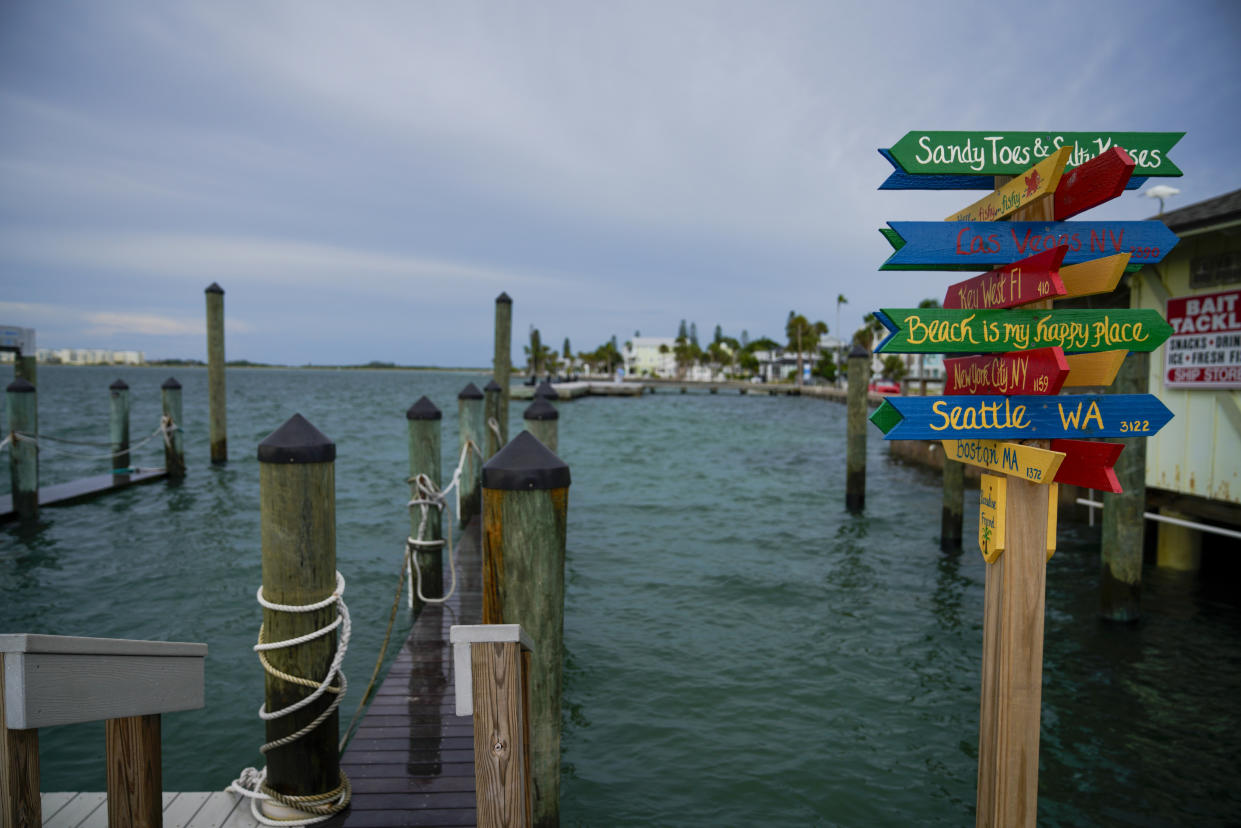Tampa Bay will be on Idalia’s ‘dirty side.’ What that means for the area.

The “dirty side” of Hurricane Idalia was expected to skirt the coast of Tampa Bay before it makes landfall as a major hurricane in the Big Bend region of Florida on Wednesday morning.
A storm’s “dirty side” is an unflattering way to describe the side of a tropical system that brings the worst effects, such as higher rain amounts, wind speeds and storm surge. Idalia’s tropical storm-force winds extended outward well over 100 miles Tuesday and were expected to reach portions of Tampa Bay as it sliced near the coast.
“It’s kind of slang-ish, but it just means that the worst of the storm surge and the wind are usually to the east of the center as the center approaches the coast,” said Mike Clay, chief meteorologist for Spectrum Bay News 9.
Here’s what to know about the “dirty side” of Idalia, and what that could mean for Tampa Bay.
What is the “dirty side” of a hurricane?
Tropical cyclones tend to be symmetrical, meaning winds are generally the same in all quadrants of the storm relative to its center, according to the National Oceanic and Atmospheric Administration. A hurricane, however, is often not static and is instead moving, which creates an asymmetric structure.
All storms are different, Clay said. In the Gulf of Mexico, however, the “dirty side” of the storm is usually on the east side of the track.
The agency gives an example of the phenomenon: Say a storm is moving at 10 mph with 90 mph winds. On the forward-moving or “dirty” side, wind speeds would reach 100 mph, while the side with the backward motion would have wind speeds of 80 mph, the administration said.
Forecast advisories take into account this asymmetry, and relay the highest wind speeds, the administration said.
Idalia center may stay 100 miles west of us
The Tampa Bay area was expected to be on the dirty side of Hurricane Idalia for most of the system’s trek up the coast. However, Idalia’s center was expected to stay potentially 100 miles west of the Tampa Bay area, which would keep the brunt of the storm’s hurricane-force winds away from the area, said Ali Davis, a meteorologist with the National Weather Service’s Tampa Bay office on Tuesday afternoon.
“The system is going to be paralleling the west coast of Florida, and because of that, Tampa Bay will be on the right side pretty much the entire storm,” Davis said.
The Tampa Bay area won’t get away from that right-side activity until Idalia makes landfall and exits the region, Davis said, which was expected to occur shortly after daybreak. By midday Wednesday, Tampa Bay should start seeing rain bands shifting east of the area.
Forecasters are expecting to see plenty of rain — about 4 to 8 inches — and the threat of tornadoes is prevalent. The National Hurricane Center placed the Tampa Bay area under a hurricane warning and a storm surge warning. Forecasters said storm surge could reach as high as 7 feet in this region.
Davis said the weather service had already seen some waterspouts Tuesday afternoon and expected the tornado threat to continue into the night.
“There is the potential for tornadoes and overnight tornadoes with that, so we want to make sure people are aware of that risk and have a way to receive those warnings,” Davis said.
• • •
Tampa Bay Times hurricane coverage 2023
What to know about forecast tracks as Idalia looms over Florida
Idalia could rapidly intensify. How and why?
Hurricane season 2023: Here’s what to know about forecast tracks.
Storm surge is deadly. We built a computer model to show how.
How to protect your pets — and yourself — during a hurricane.
Checklists for building all kinds of storm kits
Protect your data and documents using your phone

